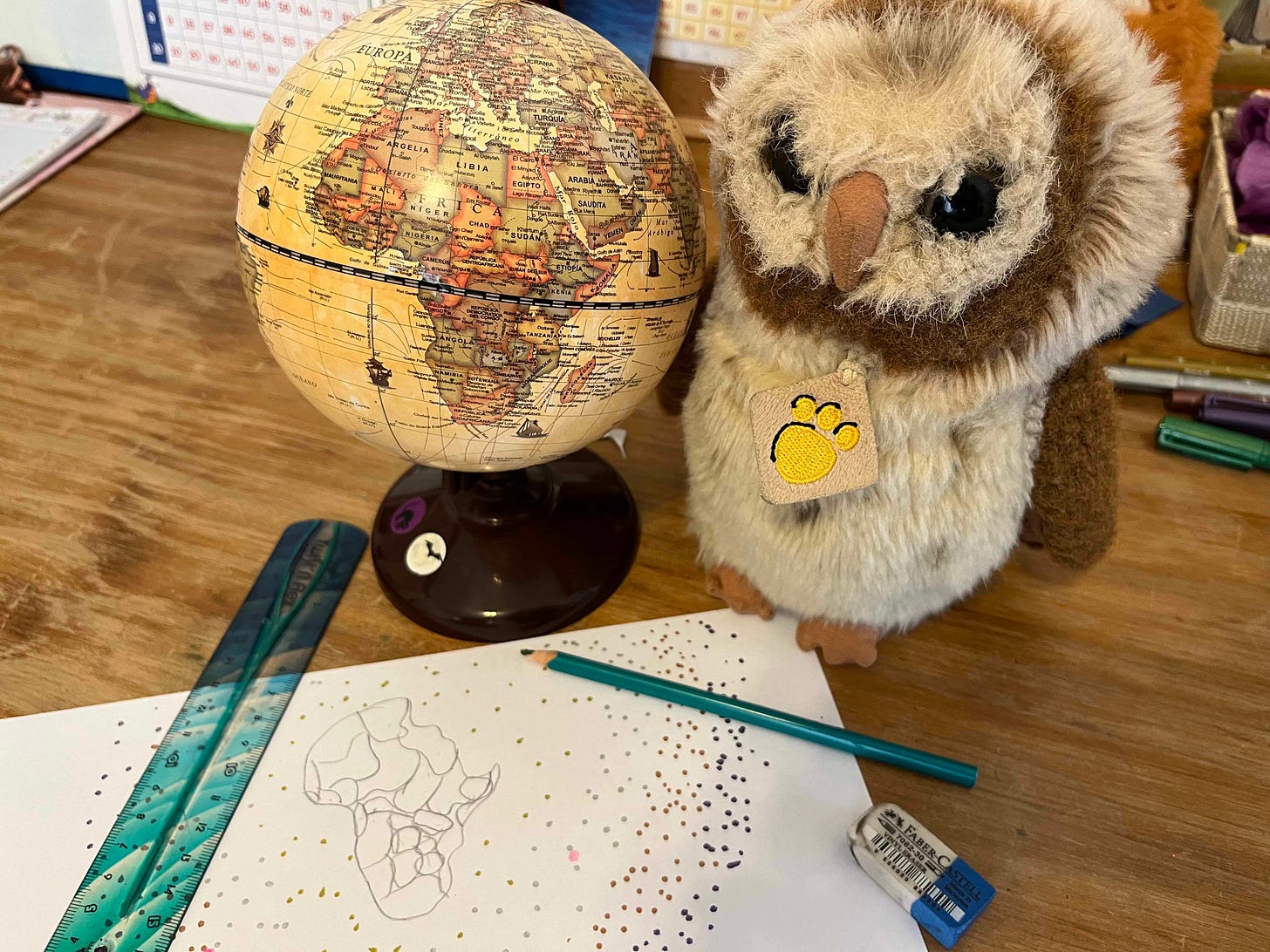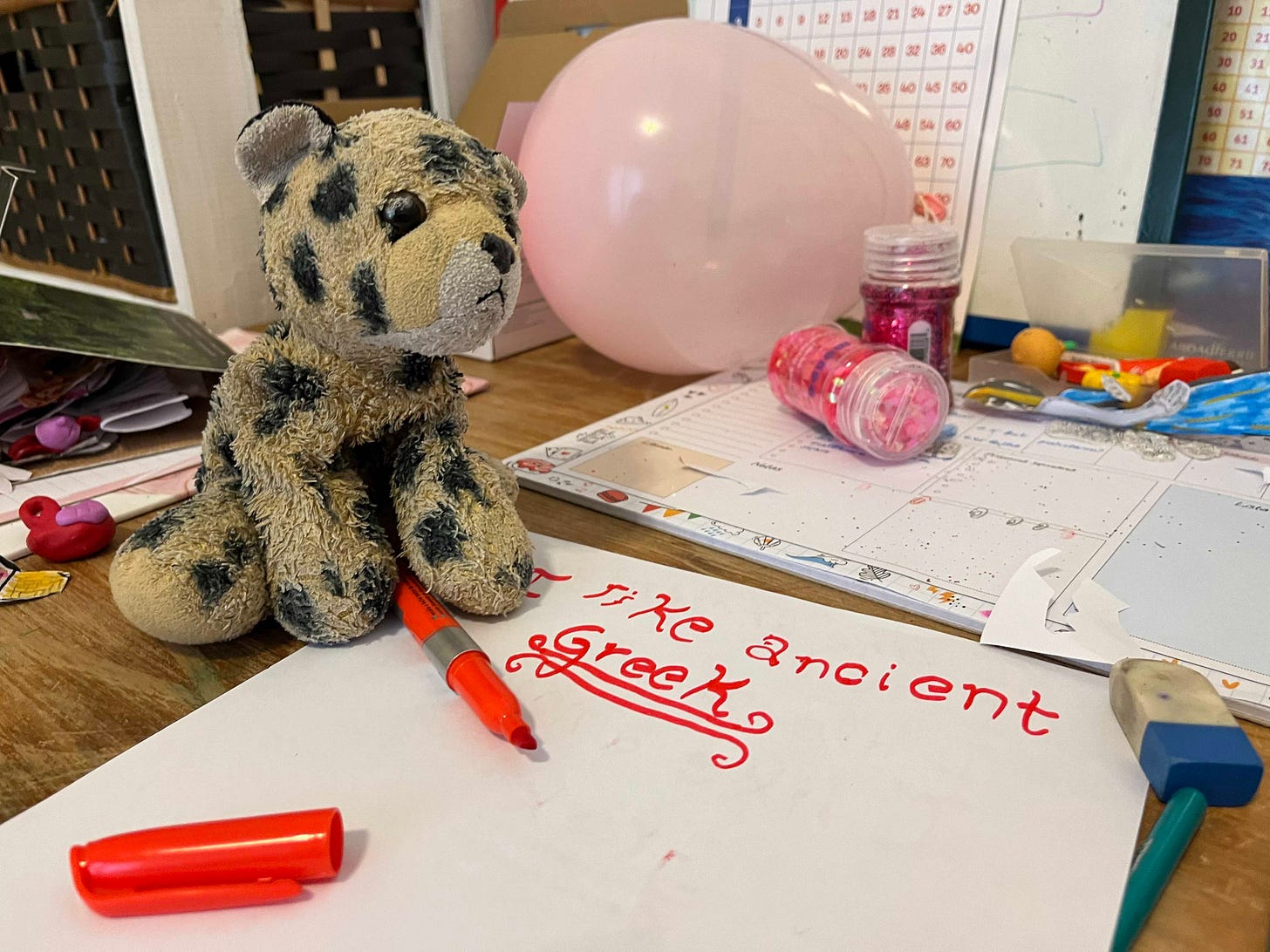Dear Classical KIDS,
Before we get started, an important reminder! We will have our first Classical KIDS Discussion taking place tomorrow (Wednesday) at 5pm EDT - New York time. It will NOT be recorded, as we will be encouraging the kids to talk about the myth.
I’ll begin with a kid-friendly retelling of the Myth of Demeter and Persephone - one of the most important ancient tales that explains the seasons and the importance of the harvest Goddess (as well as the power of mothers!) Then we’ll open it up for review and discussion.
Please register here to get the zoom link:
I hope you can join us! If you can’t, but you are very interested, please let me know if there is another time slot that works for you and we can try to plan the next one accordingly.
Now… do you know all the ways in which “γράφω” has influenced our language? Check out its legacy, as well as some fun activities and discussion below.
All the best,
Anya Leonard
Founder and Director
Classical Wisdom Kids
Time to Write
Do you remember our newest word, “γράφω”(gráphō)? It means "to write" or "to draw" and it has a rich history that stretches back to the early periods of Greek civilization.
In fact, the verb "γράφω" comes from Proto-Indo-European roots related to writing or scratching! In ancient Greek, it was used in various contexts including writing letters, inscriptions, and drawing images. Its usage can be seen in numerous classical texts, indicating its importance in Greek culture.
Today, we can find it in so many words, like photograph, autography and calligraphy... we went over some of the ways it was used last week, but will go into even more this week - plus fun activities and discussions below!
But first, if you want to recap, you can do so here:
The legacy of "γράφω" can be seen in modern Greek, where it still means "to write." It has also influenced words in other languages, particularly in terms related to writing and inscriptions, such as "graph," "graphic," and "autograph."
Let’s check out more common words we use in English that contain "γράφω".
Biography: The written account of someone’s life. It combines "bio-" (life) with "graph" (writing).
Telegraph: Combining "tele-" (distant) with "graph," it refers to writing or recording messages over long distances.
Seismograph: A device that writes or records seismic activity. "Seismo-" comes from Greek for "earthquake," and "graph" refers to recording.
Cartography: The art and science of map-making, from "carto-" (map) and "graph" (writing).
Let’s keep exploring how words influence the things we love today and remember: every Greek word has a story to tell.
Can you tell if Owly or Ossy is interested in Cartography or Calligraphy?
Questions:
1. What does the Greek word “γράφω” mean?
2. How does “γράφω” connect to modern words like “photography” and “autograph”?
3. Can you think of other words that come from “γράφω”?
4. What is your favorite “biography”? Can you think of some?
Activities:
1. Create Your Own “Graph” Word! – Invent a new word using the root “graph.” What does it mean? Draw or explain it.
2. Write in Calligraphy! – Try writing your name or a favorite word in calligraphy style to make it look beautiful!
3. Become a Cartographer! That is a person who makes maps. Try to draw your house, your neighborhood or park. Then see if your friend can find their way through it... maybe even put a treasure somewhere, to make it really interesting!






